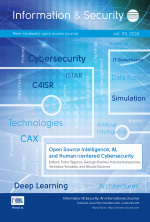Achieving Interoperability of Command and Control Systems Using Translation Gateways
Source:
Information & Security: An International Journal,Keywords:
C4I, context translation, proxy server, simulation, software architecturesAbstract:
Over the last several decades, the military has greatly benefited from the increased knowledge and capabilities provided by using computerized command and control systems. As this use has expanded exponentially, so has the need to integrate these systems. The cost of establishing collaboration between these systems is typically high, and is complicated by differing organizational readiness levels, willingness, and technical ability to affect collaboration. The opportunity to enable interoperability, therefore, has great value, provided it can address these factors and more. In this paper, the authors present an approach to achieving interoperability through the use of a translation gateway. Translation is the conversion of one data format or protocol to another while retaining the meaning and context of the original. The key factors in translation include the data itself, the format of the data, the medium of transmission, and the context of the data that turns it into useful information. A gateway must be able to deal with all of these factors. The data, format, and medium translation challenges are relatively straightforward, discrete, and solvable transformations. The context translation challenge is more complex and involves the application of subject matter knowledge and expertise. A successful architectural approach utilizes the layered methodology. Gestalt has identified four key layers that contribute to a successful translation gateway. They are, a system-neutral data interchange format, an external systems interface layer, a translation layer and an intelligence layer.
